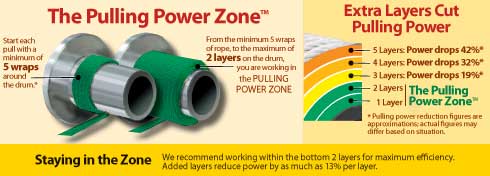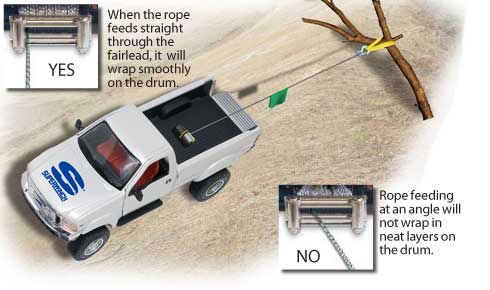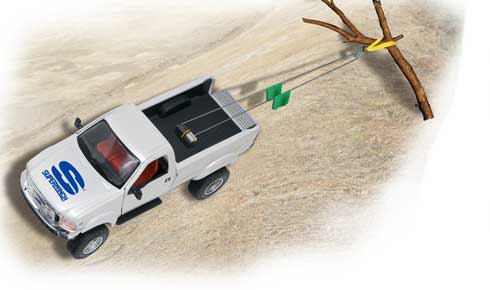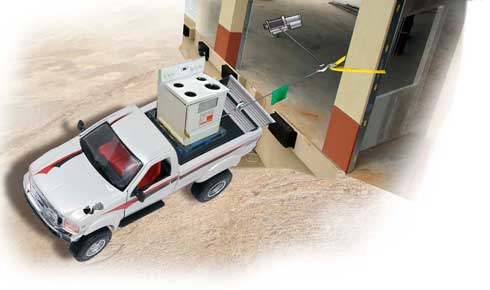|
|
|
3 Things To Know Before You Buy |
1. Most winches can be used to pull different types of heavy loads in a variety of situations. To help ensure your safety and get the most from your purchase, follow these guidelines for choosing the proper winch:
Determine the type of load to be moved and whether it will be pulled on a fairly flat surface or an incline, such as a ramp.
Dead Weight: a load without wheels or operable wheels (a vehicle stuck in the mud, for example).
Rolling Weight: a wheeled load that will not be moved by its own power.
(See Trailer winching instructions to calculate which model you need.)
2. Laws of Physics govern the performance of a winch. Law #1: too many layers of rope on the drum will rob your winch of power and efficiency and keep you from working in the Pulling Power Zone™.

WINCH INDUSTRY STANDARD Pulling capacity is determined by the load a winch can pull with only the BOTTOM LAYER of rope on the drum.
3. Physics Law #2: double the line with a Pulley Block and double the pulling power of your winch. Removing extra rope from the drum to use with a pulley block not only doubles winch power, it allows you to work in the Pulling Power Zone™!

Fig 1. A single-line, straight pull postioned to keep the rope spooling straight through the roller fairlead.

Fig 2. A double-line, straight pull with a typical winch and pulley arrangement. Adding a pulley block to your winch doubles its capabilities.

Fig 3. A single-line, redirected pull. When you don't have a straight clean line to the anchor point, use a pulley block.

多功能绞盘推荐
|